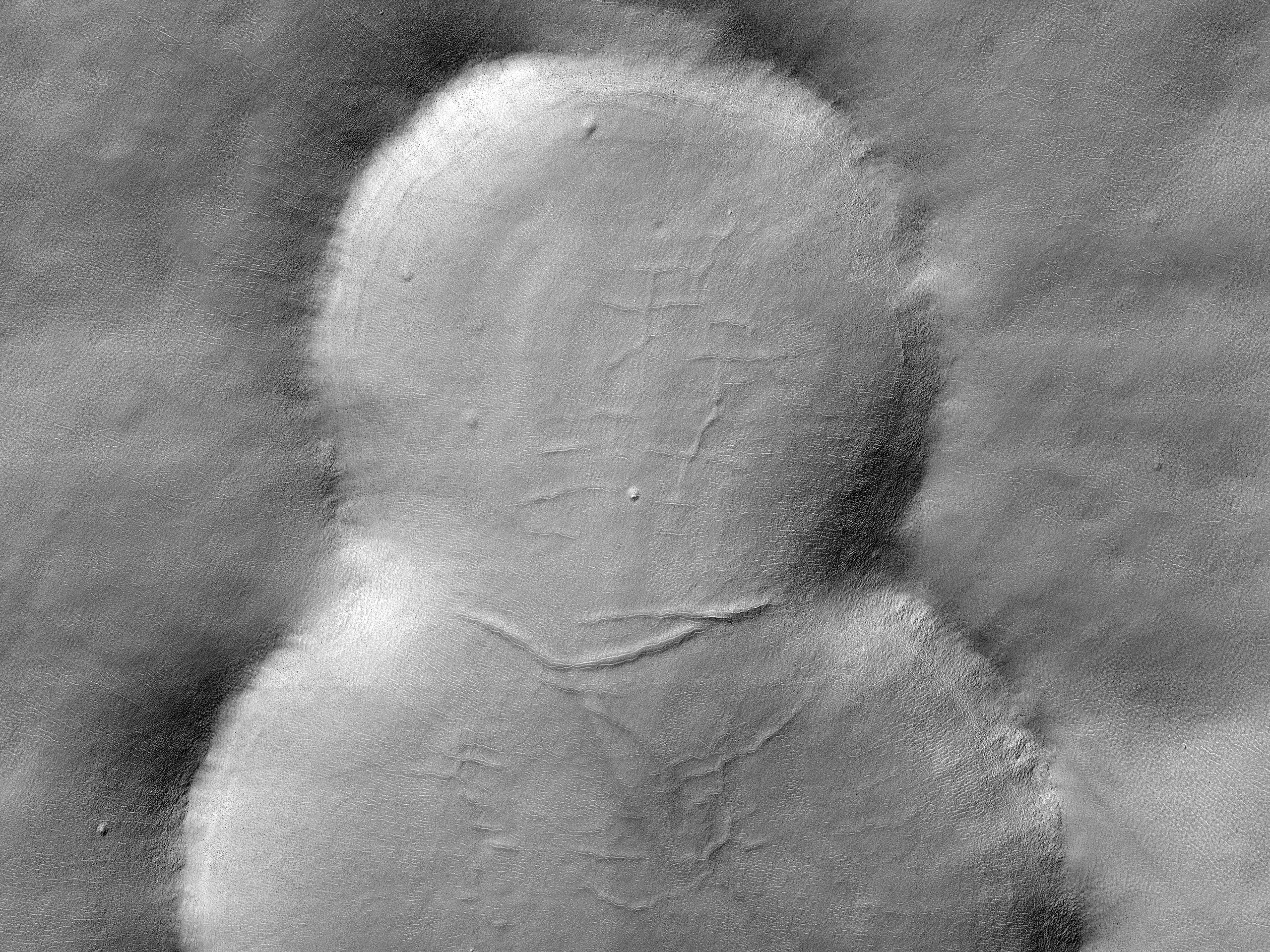Impact craters are very common on the surface of Mars as well as any other planetary body lacking a significant atmosphere (e.g., the Moon). In the absence of a thick atmosphere and active geologic processes, and if the surface is very old and has not been altered by something like lava flows, it will retain evidence of so many impacts that older and newer craters appear like circles on top of each other.
When we see a combination of two crater shapes on the ground, the one showing a nearly “full circle” will be the younger crater.
In this image, we see the combined shape of two impact craters. However, neither crater displays a continuous circular shape (or rim) in the area connecting them. These two “figure 8” shapes indicate a binary impact where the impactor split apart shortly before hitting the ground, creating both craters at the same time.
ID:
ESP_054940_2385date: 16 April 2018
altitude: 307 km
https://uahirise.org/hipod/ESP_054940_2385
NASA/JPL-Caltech/University of Arizona
#Mars #science #NASA
